|
ARBOR ASLAN W900C Series
Capacitive multi-touch wide-screen industrial Panel PCs for intelligent factory and many other fixed-mount applications
(by Conrad H. Blickenstorfer)
Share on:




In this article we'll describe and examine ARBOR Technology's new line of Intel "Skylake" 6th generation Core processor-powered ASLAN Panel PCs, including benchmarking and a detailed look at two models of the series, the 10.1-inch W910C and the 21.5-inch W922C. The latter two represent the smallest and the largest models of the series.
ARBOR Technology specifically designed the ASLAN Series of industrial panel PCs for human-machine interface applications in deployments such as industrial automation, building automation, process control and various custom HMI applications. As a result, ASLAN panels come in a wide variety of sizes, have contemporary wide screens with fashionably thin bezels, provide plenty of performance for advanced applications, and use, of course, capacitive multi-touch.
As a result, ASLAN panels provide a user experience reminiscent more of modern consumer tablets than old-style industrial panel computers. While tough and durable, the panels have a state-of-the-art look and feel that's backed up by the same effortless tapping, dragging, panning, pinching and zooming of smartphones or an iPad.
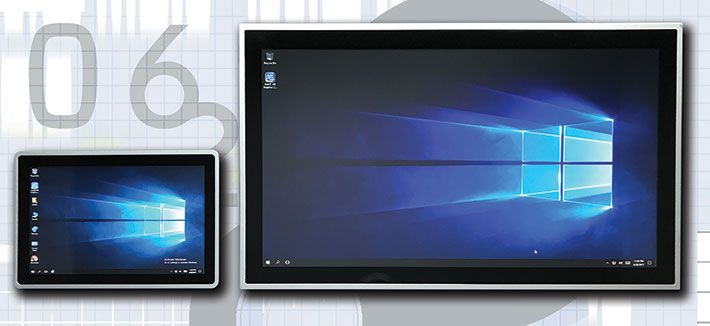
The picture above shows, in scale, the smallest member of the Skylake-powered ASLAN W900C models on the left, and the largest one on the right. 10.1-inch screen vs 21.5-inch screen. The other three models of the series have displays measuring 11.6, 15.6, and 18.5 inches diagonally. Why so many? Simply because the many possible applications for such panels require this variety in size.
ARBOR's ASLAN series: concept and models
While all of the "Skylake" 6300G4 ASLAN W900C panels use the same Intel Core i5-6300U processor and look almost identical, they are differentiated in terms of display size, mechanical chassis, and to some extent I/O. So here's what's the same and what's different:

- All models use the Intel Core i5-6300U processor.
- All models use the same embedded-style motherboard.
- All models use cast aluminum and steel design, but the construction is different.
- Smaller models only have a single mSATA slot for mass storage. Larger models have that plus two 2.5-inch SATA SSD locations for significantly more storage
- Larger models have additional ports, both standard and optional.
- Display resolution, pixel density, and luminance varies between models.
As long as a series of machines all designed for the same type of deployment comes in different sizes, why not make them all completely identical in capabilities and features?
First, because of size. A small 10.1-inch panel does not have the space required for dual 2.5-inch drives or the additional serial ports, DIO ports, and integrated speakers available in the larger models.
Second, 10-inch panels are used for different purposes and they are used in different ways, hence display resolution and brightness are optimized for each size.
Consider that a modern smartphone like the iPhone 7 Plus has over 400 pixels per inch whereas a 60-inch 4k ultra-high resolution TV only has 68 pixels per inch. Both look super-sharp because we view them from different distances. The same goes for panel computers such as the ASLAN series.
The tablet below shows the five ASLAN W900C Series models available. There are actually two additional models also using the same setup and same 6300U processor (a more legacy-oriented 17-inch model with 4:3 aspect ratio, and a sealed IP65-rated stainless steel 21.5-inch model), but the five listed here are all the same in concept and purpose:
|
ARBOR ASLAN W9XXC Series models
|
|
Company
|
ARBOR
|
ARBOR
|
ARBOR
|
ARBOR
|
ARBOR
|
|
Model
|
W910C
|
W912C
|
W915C
|
W919C
|
W722C
|
|
Screen size
|
10.1 inches diagonal
|
11.6 inches diagonal
|
15.6 inches diagonal
|
18.5 inches diagonal
|
21.5 inches diagonal
|
|
Screen resolution
|
1280 x 800 pixel
|
1920 x 1080 pixel
|
1366 x 768 pixel
|
1366 x 768 pixel
|
1920 x 1080 pixel
|
|
Screen pixel per inch
|
149 ppi
|
190 ppi
|
100 ppi
|
85 ppi
|
102 ppi
|
|
Screen aspect ratio
|
16 : 10
|
16 : 9
|
16 : 9
|
16 : 9
|
16 : 9
|
|
Screen brightness
|
350 nits
|
300 nits
|
300 nits
|
300 nits
|
250 nits
|
|
Touch
|
PCAP multi-touch
|
PCAP multi-touch
|
PCAP multi-touch
|
PCAP multi-touch
|
PCAP multi-touch
|
|
CPU
|
Intel Core i5-6300U
|
Intel Core i5-6300U
|
Intel Core i5-6300U
|
Intel Core i5-6300U
|
Intel Core i5-6300U
|
|
RAM
|
4GB DDR4
|
4GB DDR4
|
4GB DDR4
|
4GB DDR4
|
4GB DDR4
|
|
Video-out
|
HDMI and VGA
|
HDMI and VGA
|
HDMI and VGA
|
HDMI and VGA
|
HDMI and VGA
|
|
Storage
|
1 x mSATA
|
1 x mSATA
|
1 x mSATA + 2 x 2.5" bays
|
1 x mSATA + 2 x 2.5" bays
|
1 x mSATA + 2 x 2.5" bays
|
|
Serial
|
2 x RS232/485
|
2 x RS232/485
|
4 x RS232/485
|
4 x RS232/485
|
4 x RS232/485
|
|
Digital I/O
|
NA
|
NA
|
4-in/4-out (optional)
|
4-in/4-out (optional)
|
4-in/4-out (optional)
|
|
Expansion
|
2 x mPCIe
|
2 x mPCIe
|
2 x mPCIe
|
2 x mPCIe
|
2 x mPCIe
|
|
USB
|
2 x 2.0 + 2 x 3.0
|
2 x 2.0 + 2 x 3.0
|
2 x 2.0 + 2 x 3.0
|
2 x 2.0 + 2 x 3.0
|
2 x 2.0 + 2 x 3.0
|
|
Speakers
|
NA
|
NA
|
2 x 2w (optional)
|
2 x 2w (optional)
|
2 x 2w (optional)
|
|
Size
|
255 x 175 x 47 mm
|
306 x 206 x 47 mm
|
404 x 255 x 56 mm
|
470 x 295 x 56 mm
|
536 x 332 x 56 mm
|
|
Weight
|
3.8 lbs/1.7 kg
|
unknown
|
unknown
|
unknown
|
15.2 lbs/6.9 kg
|
|
Power
|
DC 12~28V
|
DC 12~28V
|
DC 9~36V
|
DC 9~36V
|
DC 9~36V
|
|
Product pages/specsheets
|
ASLAN-W910C
|
ASLAN-W912C
|
ASLAN-W915C
|
ASLAN-W919C
|
ASLAN-W922C
|
The table above shows the similarities and differences between the various models of the ASLAN W900C Series. While they all have the same processor, RAM memory and basic complement of ports, the big difference in size and weight between the smallest and the largest member of the line has an impact on expansion potential, additional ports, and also on the type of display. For example, while the 11.6-inch W912C model sports full HD resolution, the larger 15.6 and 18.5-inch models only have 1366 x 768 pixel, meaning they are intended and optimized for different types of deployment than the W912C.
Now let's take a closer look at the two sample units ARBOR sent RuggedPCReview.com for evaluation.
ARBOR W922C — 21.5-inch
The W922C is the largest and heaviest model of the series, weighing in about 15 pounds despite its elegant, slender design. The 21.5-inch screen size makes it suitable for any number of walk-up or sit-down automation, lookup, and control applications.
What's striking with the ASLAN 21.5-inch panel is its very high quality and exceedingly solid all-metal design. It consists of a beautifully finished cast aluminum front with a thin bezel, with the capacitive touch display surface mounted flush into the aluminum frame/bezel. The aluminum back cover is secured by eight Philips screws. Four small ones on the sides, and four large ones in the 100 x 100 mm VESA square pattern. Those double up for wall or arm mounts, making for easy placing and securing almost anywhere. The backplate has a number of cooling vents to assist in the passive thermal management of this panel system. No fan and solid state disk(s) mean silent operation.
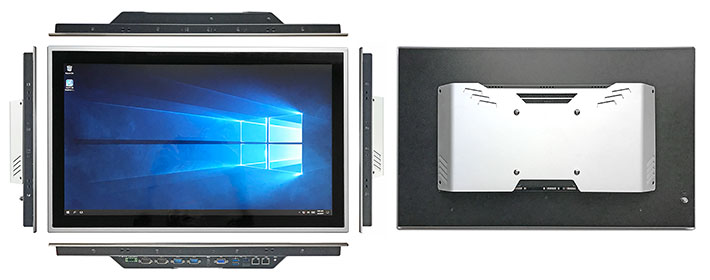
At RuggedPCReview we always take things apart to see and show how suitable for its intended purpose a design is, and how well it's made and implemented. 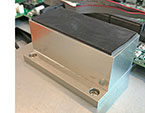 Underneath the back cover you can see the panel's motherboard and expansion boards. The motherboard is a rectangular 155 x 125 mm embedded design 165 x 160 mm expansion board that accommodates two 2.5-inch and two DB9 COM ports. The expansion board also has the unit's DC power input.
Underneath the back cover you can see the panel's motherboard and expansion boards. The motherboard is a rectangular 155 x 125 mm embedded design 165 x 160 mm expansion board that accommodates two 2.5-inch and two DB9 COM ports. The expansion board also has the unit's DC power input.
Behind the thick aluminum front frame is a steel plate onto which the AU Optronics-sourced TN a-Si TFT-LCD with 170 degree viewing angles horizontally and 160 degrees vertically is mounted. The screen boasts 250 nits luminance, anti-glare treatment and 3H hardness coating, meaning that it's likely meant primarily for indoor applications.
The steel plate is covered by a protective 9/16th of an inch tall open steel box. The motherboard and expansion board is mounted on top of that steel box. A solid block of milled aluminum serves both as a heat sink for the processor and ancillary electronics as well as a heat spreader (see small picture above right).

On top of that is another 5/8th of an inch solid steel box, with a cutout for the circuit boards. That one is secured to the primary steel chassis via no fewer than 25 small Philips screws. This is one super-solid machine!

Above you can see the ASLAN W922C's I/O block on the back of the panel. All ports are facing downward.
ARBOR W910C — 10.1-inch
The W910C is the smallest and lightest model of the series, weighing under four pounds. There is, of course, a strong family resemblance with the big W922C, but the small model is not just a shrunken version of the big one. Its much smaller size — its footprint is roughly that of a standard Apple iPad — means it'll be used in different types of applications. Its compact size means the W910C can fit virtually anywhere, bringing computing power to many locations where standard size panels just won't fit.
Construction of the W910C model is similar to the big W922C in that the smaller unit also uses a very sturdy cast aluminum front onto which the LCD is mounted. This is protected by an aluminum separator plate. The flat backside of the panel is then screwed onto the front aluminum frame, with the motherboard mounted on top of that. Two steel brackets have cutouts for the edge-mounted ports on one side, and for the cable-connected I/O ports on the other.
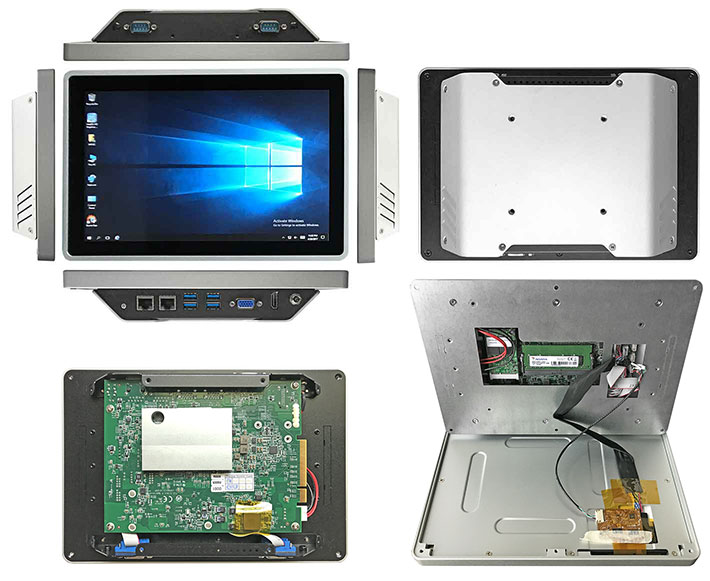
A roughly credit card-sized heatsink sits on top of the board, providing cooling to the powerful i5-6300U processor. This means that heat is dissipated through far less mass than in the larger unit, resulting in significantly higher operating temperatures that may affect CPU performance. The 10-inch panel's mass storage is via a very fast 64GB mSATA module from Silicon Power.
The LCD here is an IVO M101NWWB R3 sourced from Chinese IVO (InfoVision Optoelectronics). It's a 1280 x 800 pixel 16:10 aspect ratio IPS a-SI TFT-LCD with 170 degree viewing angles horizontally and vertically, 350 nits luminance, anti-glare treatment and 3H hardness coating.

Above is a look at the 10-inch model's I/O. It also faces downward, but there are also two DB9 serial ports facing upward. In our review units, the sole difference between the small and the large panel were the large model's extra two serial ports.
The ARBOR ASLAN W9XXC Series
Panel computers traditionally haven't changed much from generation to generation. That's because with them the emphasis is on functionality. Form follows function and so most panels are simply tough boxes with a display in the front.
 However, while requirements such as toughness, reliability and immunity to damage don't change over the years, technology has been changing rapidly. The smartphone and tablet revolutions mean that almost everyone is now familiar with touch screens. And the elegance and ease-of-use of consumer smartphones and tablets makes users expect nothing less from industrial panels.
However, while requirements such as toughness, reliability and immunity to damage don't change over the years, technology has been changing rapidly. The smartphone and tablet revolutions mean that almost everyone is now familiar with touch screens. And the elegance and ease-of-use of consumer smartphones and tablets makes users expect nothing less from industrial panels.
This includes pleasing design, capacitive multi-touch, and enough performance to guarantee instand response. All of this was surely on the minds of ARBOR's engineers and technician when they created this new line of ASLAN panels.
So what's this new performance-oriented series of tough ARBOR panel computers all about?
For one thing, it provides the almost universally liked projected capacitive multi-touch in a line of industrial-grade panel computers.
For another, while many panels provide only as much performance as is needed for well-defined (and usually simple) applications, the W900C Series has the power of a general purpose PC that can do anything. This means that the W900C Series will also be used in deployments where one does not usually find industrial panel computers. And this is the likely reason why ARBOR paid special attention to a sleek, modern, elegant design.
ARBOR's decision/practice to make the same basic panel type available in various sizes makes perfect sense, especially in a class of devices that may be used for all sorts of applications. Screen sizes ranging from 10 to 21.5 inches diagonally makes sense, though we think customers might appreciate the popular 27-inch format as well.
With its powerful processor and suitability for a very wide array of applications, ARBOR makes the W900C line available with a variety of operating systems. Windows 7, 8.1 and 10 are, of course, all available, and so is Ubuntu Linux. We assume embedded versions of the Windows operating systems are available as well.
Intel 6th gen "Skylake" compared to Intel "Bay Trail" J1900
All models of ARBOR's ASLAN W900C series use the Intel Core i5-6300U processor, just as all ASLAN W700C panels use the Intel Celeron J1900 CPU. Does this mean the Core i5-6300U is inherently better than the J1900? Newer than the J1900? Or are there other reasons why ARBOR decided to use the Core chip for this new series of ASLAN panels? This warrants some discussion.
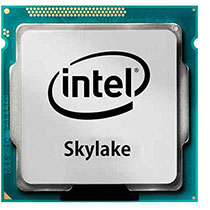 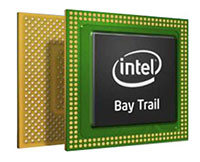 Right upfront: The new Core-based ASLAN units do not replace the older Bay Trail-based models. Intel Core processors are in a different class from Intel's Atom-based processors such as the Celeron J1900. Right upfront: The new Core-based ASLAN units do not replace the older Bay Trail-based models. Intel Core processors are in a different class from Intel's Atom-based processors such as the Celeron J1900.
Core processors are designed to competently handle a broad variety of potential tasks. That's because PC users may use their computers for all sorts of work, including complex, demanding applications. Core processors are designed for that, and they are powerful enough to handle pretty much anything they may encounter.
Atom-based processors are far more targeted. Some are aimed at price-sensitive markets and cost only a small fraction of a Core processor. Others fill the need of systems where the workload is known and it makes economic sense to provide exactly as much computing power is needed and no more. And there are many industrial applications where economical, reliable, fanless operation is more important than rarely used peak performance. The latter is likely why ARBOR found the quad-core Celeron J1900 to be a great choice for their ASLAN W700C line. The J1900 packs considerable punch even though its thermal design power is just 10 watts, enough for the vast majority of the intelligent factory applications the W700C panels were designed for.
ARBOR's goals for the ASLAN W900C Series were different, however. These panels are for applications that may run demanding applications that go well beyond just displaying information or performing simple searches and transactions. Such deployments may require more and faster memory, more and faster cache, faster and more powerful graphics, more expansion options, and the inclusion of many of the features and technologies Intel bakes into its Core processors but not into the lower-end CPU families.
The Intel Core i5-6300U is a good choice for this type of platform. It's a modern dual core/quad thread design based on 14 nm lithography. The cores' base frequency is a fairly high 2.4GHz, with a maximum "turbo" frequency of 3.0GHz available during periods of peak processing demand. Its integrated Intel HD Graphics 520 are powerful enough for even advanced imaging and support 4K resolution as well as all of the latest relevant graphics standards. Despite its high performance, the chip has a thermal design power (TDP) of just 15 watts, which in panels such as the ASLAN W900C Series allows fanless operation.
To provide an idea of the relative performance of the ASLAN W900C versus the W700C platforms and also between the two WC900C models ARBOR sent us for testing, we used our two standard benchmark suites, Passmark Software's PerformanceTest and CrystalMark. Here are the results:
|
ARBOR ASLAN W9XXC Series performance
|
|
PERFORMANCE COMPARISON
|
ARBOR
|
ARBOR
|
ARBOR
|
ARBOR
|
|
Model
|
ASLAN W910C (cold)
|
ASLAN W910C (hot)
|
ASLAN W922C
|
ASLAN W722C
|
|
Model
|
Panel PC
|
Panel PC
|
Panel PC
|
Panel PC
|
|
Year tested
|
2017
|
2017
|
2017
|
2015
|
|
Processor Type: Intel
|
Core i5
|
Core i5
|
Core i5
|
Celeron
|
|
Processor Model
|
6300U
|
6300U
|
6300U
|
J1900
|
|
Processor Code
|
Skylake
|
Skylake
|
Skylake
|
Bay Trail
|
|
CPU Speed
|
2.40GHz
|
2.40GHz
|
2.40GHz
|
2.00GHz
|
|
Turbo Speed
|
3.00GHz
|
3.00GHz
|
3.00GHz
|
2.42GHz
|
|
Thermal Design Power (TDP)
|
15 watts
|
15 watts
|
15 watts
|
10 watts
|
|
CPU Mark
|
4,314.7
|
3,115.5
|
4,377.9
|
1,731.2
|
|
2D Graphics Mark
|
441.7
|
309.2
|
520.0
|
203.4
|
|
Memory Mark
|
1,032.6
|
768.0
|
1,108.8
|
441.3
|
|
Disk Mark
|
2,021.8
|
2,435.5
|
461.5
|
1,135.4
|
|
3D Graphics Mark
|
478.4
|
320.3
|
390.2
|
146.5
|
|
Overall PassMark
|
1,862.4
|
1,548.3
|
1,593.5
|
820.1
|
|
ALU
|
46,479
|
34,640
|
46,595
|
29,365
|
|
FPU
|
46,652
|
33,758
|
46,551
|
25,799
|
|
MEM
|
39,593
|
36,114
|
42,492
|
23,515
|
|
HDD
|
36,640
|
36,295
|
13,532
|
27,262
|
|
GDI
|
13,683
|
9,962
|
14,398
|
6,154
|
|
D2D
|
6,002
|
5,270
|
4,878
|
3,362
|
|
OGL
|
11,176
|
8,230
|
14,110
|
4,025
|
|
Overall CrystalMark
|
200,225
|
164,269
|
182,556
|
119,482
|
The results of the benchmark testing are interesting and show a number of things.
First, with the smaller 10-inch panel we found a distinct difference in performance between the panel upon initial booting when the device was still cold (room temperature in this instance), and when we retested with the machine at standard operating temperature. That's the result of the small housing struggling to dissipate enough heat to allow the processor to run at full speed.
Second, at standard operating temperature, we found the 10-inch and the 21.5-inch panels to perform at very similar levels. That's, however, for two reasons. Unlike the smaller W910C, the larger W922C has plenty of mass to keep the panel cool enough to run at full speed. There was no difference in benchmark performance between running the W722C cold or warm. However, the W910C's Silicone Power mSATA/600 mass storage module was much faster than the PSI MemoRight SATA/300 module in the W722C. Customer should note that the type of SSD can make a large performance difference in these units.
Third, compared an Intel Bay Trail-based older version of the ASLAN W7XX Series, the new Intel Skylake-based models are roughly twice as fast overall.
ARBOR ASLAN W9XXC Series — Summary
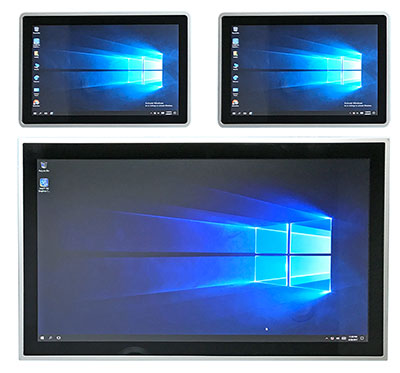 With their ASLAN W9XXC series, ARBOR Technology created a lineup of high-performance panel computers that merge heavy-duty industrial build with a sleek, elegant and contemporary look that extends their appeal beyond the usual factory floor application into all sorts of other areas. With their ASLAN W9XXC series, ARBOR Technology created a lineup of high-performance panel computers that merge heavy-duty industrial build with a sleek, elegant and contemporary look that extends their appeal beyond the usual factory floor application into all sorts of other areas.
Powered by the same Intel sixth generation "Skylake" Core processors found in many high-end rugged mobile tablets and laptops, the panels are easily able to handle complex, demanding applications.
Capacitive multi-touch provides the same effortless operation users know from their smartphones and tablets.
All panels in the series offer extra expansion potential via dual mPCIe connectors. The three larger models come with two additional serial ports and optional digital I/O and stereo speakers.
Available in five display sizes ranging from 10.1 to 21.5 inches diagonally, there's an ASLAN W900C Series panel just right for any deployment. —
Conrad H. Blickenstorfer, May 2017
 ARBOR Technology Corp.
ARBOR Technology Corp.
10F., No.700, Zhongzheng Rd.
Zhonghe Dist., New Taipei City 235
Taiwan, R.O.C.
Tel: 886 2 8226 9396
Fax: 886 2 8226 9398
|




